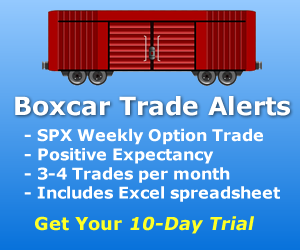The foreign exchange market (Forex) is the over-the-counter market where currencies from all over the world are traded. In terms of trading volume, the Forex market is the largest financial market in the world. Trading the foreign exchange market can offer some advantages to traders. Rather than having to peruse thousands of individual stocks or indices, Forex traders have many choices such as the seven “major” currency pairs. These include:
- EUR/USD
- GBP/USD
- USD/JPY
- USD/CHF
- USD/CAD
- AUD/USD
- NZD/USD
For those unfamiliar with the foreign exchange market (Forex), Aeromir published an article on July 21, 2018. That article can be found here: https://aeromir.com/00153/forex-101-some-basics-on-understanding-the-foreign-currency-market
The article covers the basic elements of the Forex market. In addition, some key considerations for those interested in this exciting market are discussed. The article may help you decide if the currency market is suited for your trading style and tolerance to risk.
All trading involves risk. Today we will outline some of the major areas of risk for those looking to trade the foreign exchange market.
1. Leverage Risk. Leverage risk is probably the biggest factor in trading the foreign exchange market. In Forex trading, a small investment (also called margin) is usually required. These margin policies allow traders a high amount of leverage. With this leverage opportunity, a relatively small movement in a currency pair may result in substantial losses, sometimes above the amount of the initial investment. When this happens, a broker may initiate a “margin call”, in which a trader is required to invest additional capital to cover the potential loss. Leverage is discussed in more detail in the introductory Forex article mentioned above.
Here is an example of leverage risk:
There are a variety of multiples to choose from to determine the leveraged risk when trading Forex.
Let’s say you are using 100:1 leverage and an investment of $1,000 in a trade. This means that you control $100,000 in capital (100 x $1,000 = $100,000). If you invest $100,000 into a currency and that currency price moves 1 percent against you, the value of the capital will have decreased to $99,000. This represents a loss to you of $1,000, or 100% of your investment.
2. Interest rate risk. An interest rate in Forex trading refers to the profit, and loss of your investment. This can be generated by fluctuations in interest rates in a particular country. For example, if the interest rate in a country increases, the currency will usually gain strength due to inflow of investments in that country’s assets. At the same time, if interest rates decline, that currency will most likely weaken as investors withdraw their capital. While some fluctuations are expected by Forex traders, any dramatic interest rate change can negatively affect any particular currency pair.
For the most part, higher interest rates will increase the value of a particular currency. When a currency has a higher interest rate, it will tend to draw foreign investors to that country. The higher the interest rate, the more interest is accrued.
3. Exchange rate risk. This risk is associated with changes in the value of a particular currency. This risk is based on the constant, and sometimes volatile, shifts in the supply and demand balance worldwide. For any time period that a Forex trader has an open position, he/she is subject to all fluctuations in pricing. In addition, because Forex trading is largely unregulated, there are no pre-defined daily price limits as with the more-regulated futures exchanges.
4. Country risk. When evaluating which currencies to invest in, it’s important to assess the stability of that particular country. In some developing and third world countries, exchange rates are fixed to one of the leading currencies, such as the U.S. dollar. In this instance, central banks need to maintain adequate reserves to maintain this fixed exchange rate. A “currency crisis” can come about with a decline in the value of a country’s currency. This decline in value can create instability in exchange rates. This means that one unit of a certain currency no longer buys as much as it used to in another currency. Forex traders need to keep a watchful eye on currency values at all times, as a significant shift can increase the potential for losses.
5. Transactional risk. Risk associated with the time differences between the opening of a currency pair contract and when it is settled is referred to as transactional risk. Remember, the foreign exchange market is open 24 hours a day, 7 days a week. Because of this 24/7 schedule, exchange rates may change after a trade is initiated and before it settles. This can affect pricing on currency pairs in a position. The greater the time differential between when a trade opens and closes, the higher the transactional risk.
6. Liquidity risk. There can be liquidity issues that can adversely affect a Forex trader. This has occurred most often outside of trading hours in the U.S. and Europe. Trading volume can be weak during these times; lower volume can affect liquidity. Also, some of these liquidity issues can be brought on if a particular country, or group of countries, imposes a restriction on the amount a currency price can vary in a particular time period. These restrictions may also include the amount of a particular currency can be traded during the time period the restriction may be in place.
If this occurs, a Forex trader may not be able to execute a closing trade at a favorable price, which could result in a substantial loss.
7. Risk of ruin. The definition of risk of ruin is a term that refers to an investor that risks losing a good portion of their capital on one investment.
This type of risk is inherent with all forms of trading. For those trading the foreign exchange market, it may be necessary to close out a position for a loss. This is because they don't have enough capital to meet a margin call, or to sustain the fluctuations of an open position. It is important for a Forex trader – or any trader – to calculate the risk of ruin (maximum potential loss) before opening a trade.
Summing it up …
Trading the foreign exchange market can provide a diverse element to an in investor’s portfolio. However, as with any trading strategy, trading the Forex market comes with risks associated with the benefits, as outlined in today’s article. Be sure you have a thorough understanding of all of these risks and the potential effect they may have on your trading capital before investing in the currency market.
Are you new to trading and perhaps looking for mentoring, or an educational alert service? Of are you a veteran trader seeking a trading group where you can interact with like-minded traders who share their experiences? Look no more, join Aeromir today!


